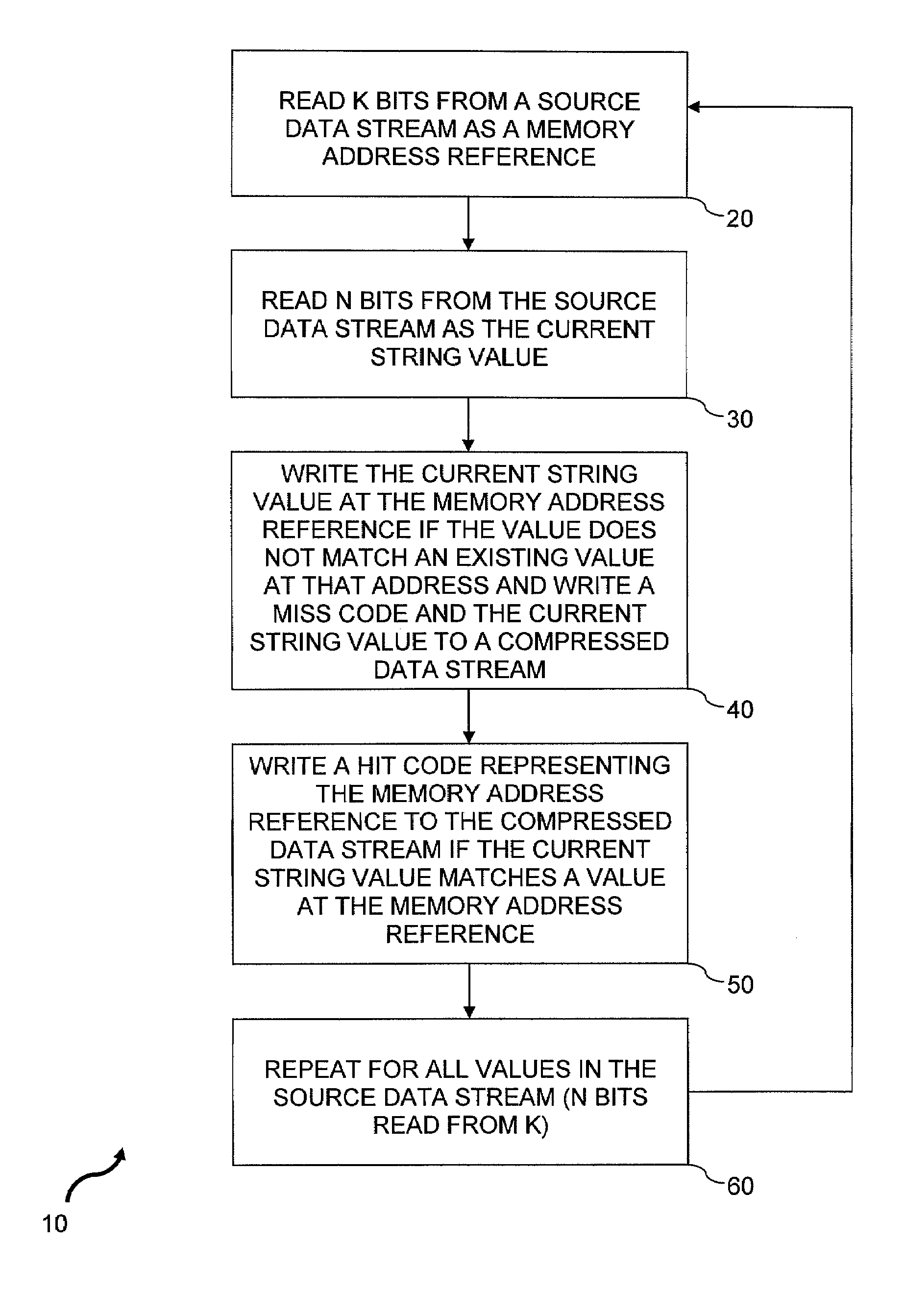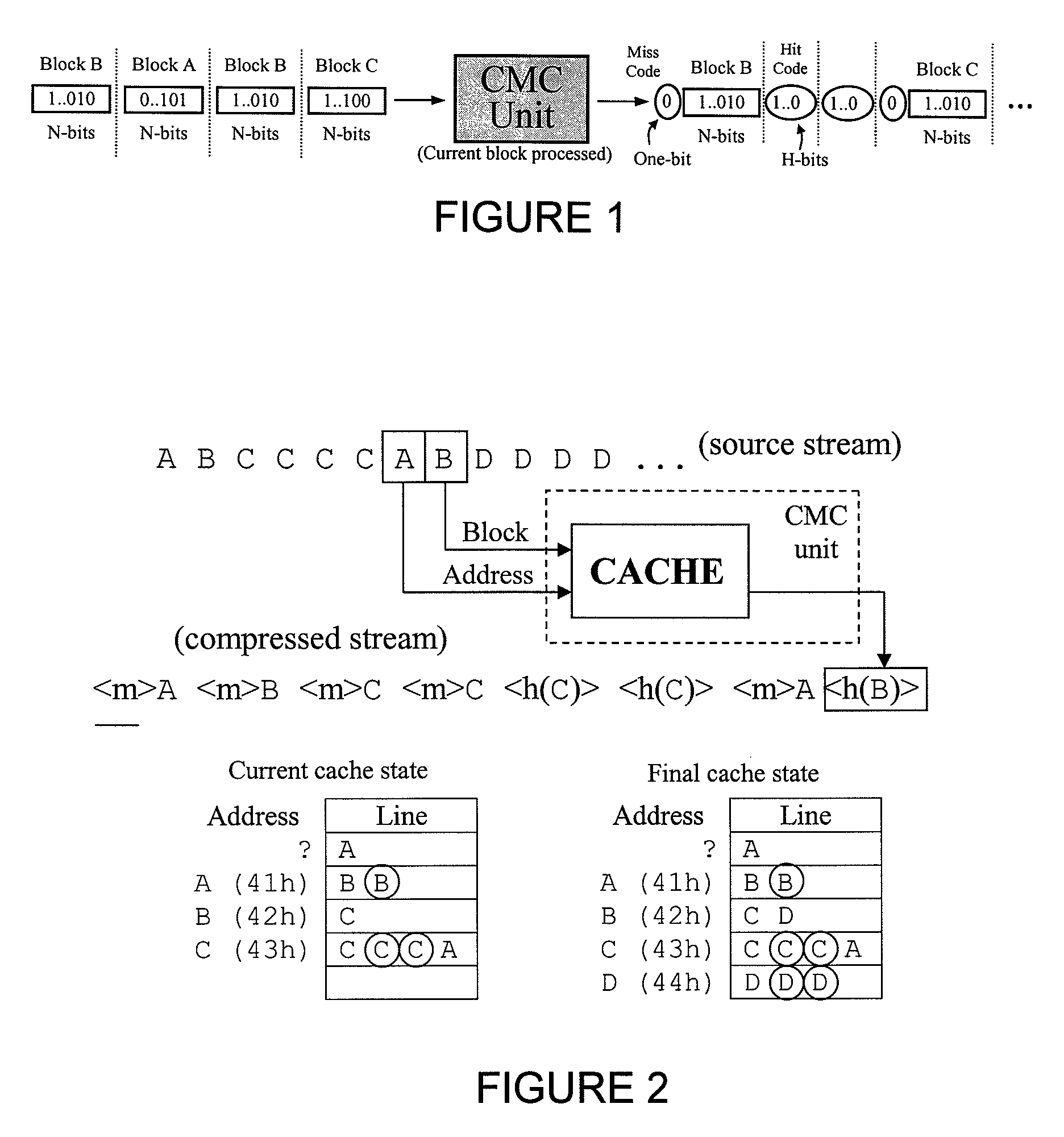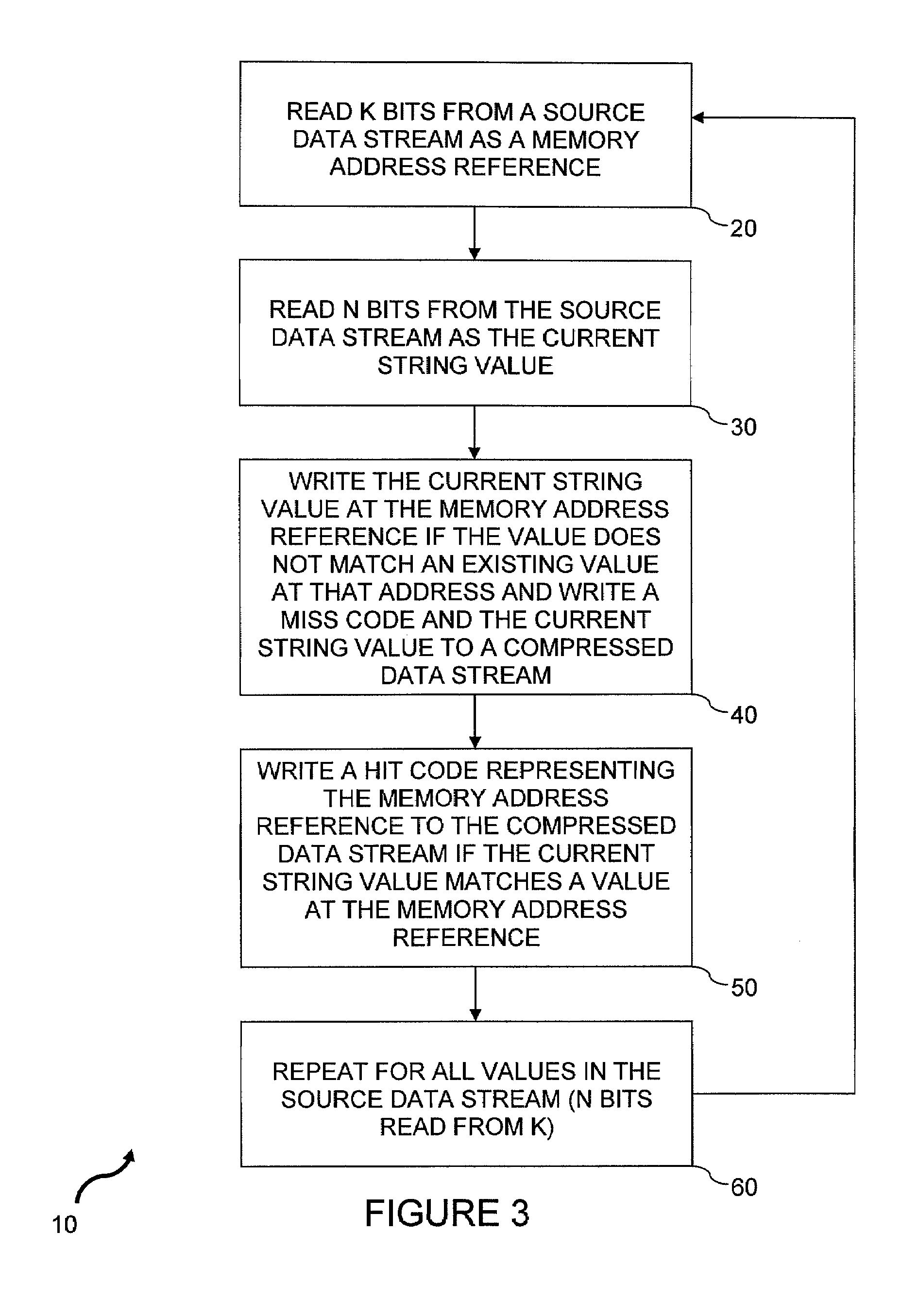High-speed data compression based on set associative cache mapping techniques
a data compression and cache mapping technology, applied in the field of high-speed data compression based on set associative cache mapping techniques, can solve the problems of lossy schemes, methods that are said to be lossless, and lossy schemes that usually obtain higher compression ratios than lossless schemes, and achieves high speed, light weight, and high configurable
- Summary
- Abstract
- Description
- Claims
- Application Information
AI Technical Summary
Benefits of technology
Problems solved by technology
Method used
Image
Examples
Embodiment Construction
[0065]The present cache mapping compression (CMC) method is based on a model that resembles the internal data caching mechanism that occurs inside a computer, between a central processing unit (CPU) and main memory. One difference is that the present CMC method exploits the data locality properties of the cache in an attempt to produce compression, rather than speeding memory access as it does in the case of computer architecture. The CMC methods explained here represent states in a finite state automaton, and as such, can either be implemented as software or hardware artifacts. As used throughout this disclosure, when referring to compressing data, the input and output streams refer to the source and compressed streams, respectively. Similarly, when reconstructing, the input and output streams correspond to the compressed and reconstructed streams, respectively.
[0066]The present method considers both the source stream and reconstructed streams as a sequence of fixed length N—bit va...
PUM
 Login to View More
Login to View More Abstract
Description
Claims
Application Information
 Login to View More
Login to View More - R&D
- Intellectual Property
- Life Sciences
- Materials
- Tech Scout
- Unparalleled Data Quality
- Higher Quality Content
- 60% Fewer Hallucinations
Browse by: Latest US Patents, China's latest patents, Technical Efficacy Thesaurus, Application Domain, Technology Topic, Popular Technical Reports.
© 2025 PatSnap. All rights reserved.Legal|Privacy policy|Modern Slavery Act Transparency Statement|Sitemap|About US| Contact US: help@patsnap.com



